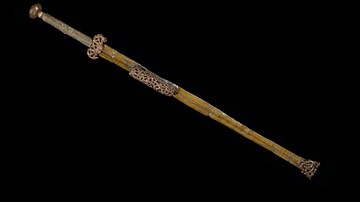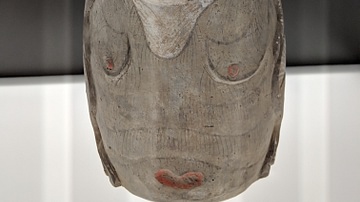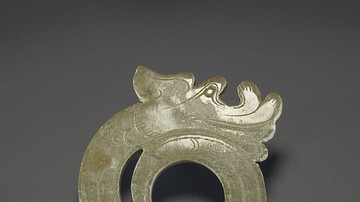Illustration
Until about the 2nd century BCE, Chinese tombs featured chambers made of heavy wooden logs. Thereafter, tombs were made of stone and brick. This stone-made example from the Han Dynasty (206 BCE-220 CE) makes clear that the tombs of the wealthy were also seen as subterranean residences. Adorned with beautifully decorated walls, they were furnished with everything that the occupant might need in the hereafter. Although criticized by social reformers, lavish burial customs persisted. Tombs in ancient China were meant to last and to be visited by relatives over time with offerings. Stone tablets bearing the occupant's name, dates, and a short biography were also deposited in the tomb. These would survive beyond the family lineage. (Royal Ontario Museum, Toronto)
About the Author
Cite This Work
APA Style
Wiener, J. B. (2017, November 07). Tomb Entrance from Han Dynasty China. World History Encyclopedia. Retrieved from https://www.worldhistory.org/image/7562/tomb-entrance-from-han-dynasty-china/
Chicago Style
Wiener, James Blake. "Tomb Entrance from Han Dynasty China." World History Encyclopedia. Last modified November 07, 2017. https://www.worldhistory.org/image/7562/tomb-entrance-from-han-dynasty-china/.
MLA Style
Wiener, James Blake. "Tomb Entrance from Han Dynasty China." World History Encyclopedia. World History Encyclopedia, 07 Nov 2017, https://www.worldhistory.org/image/7562/tomb-entrance-from-han-dynasty-china/. Web. 08 May 2025.








